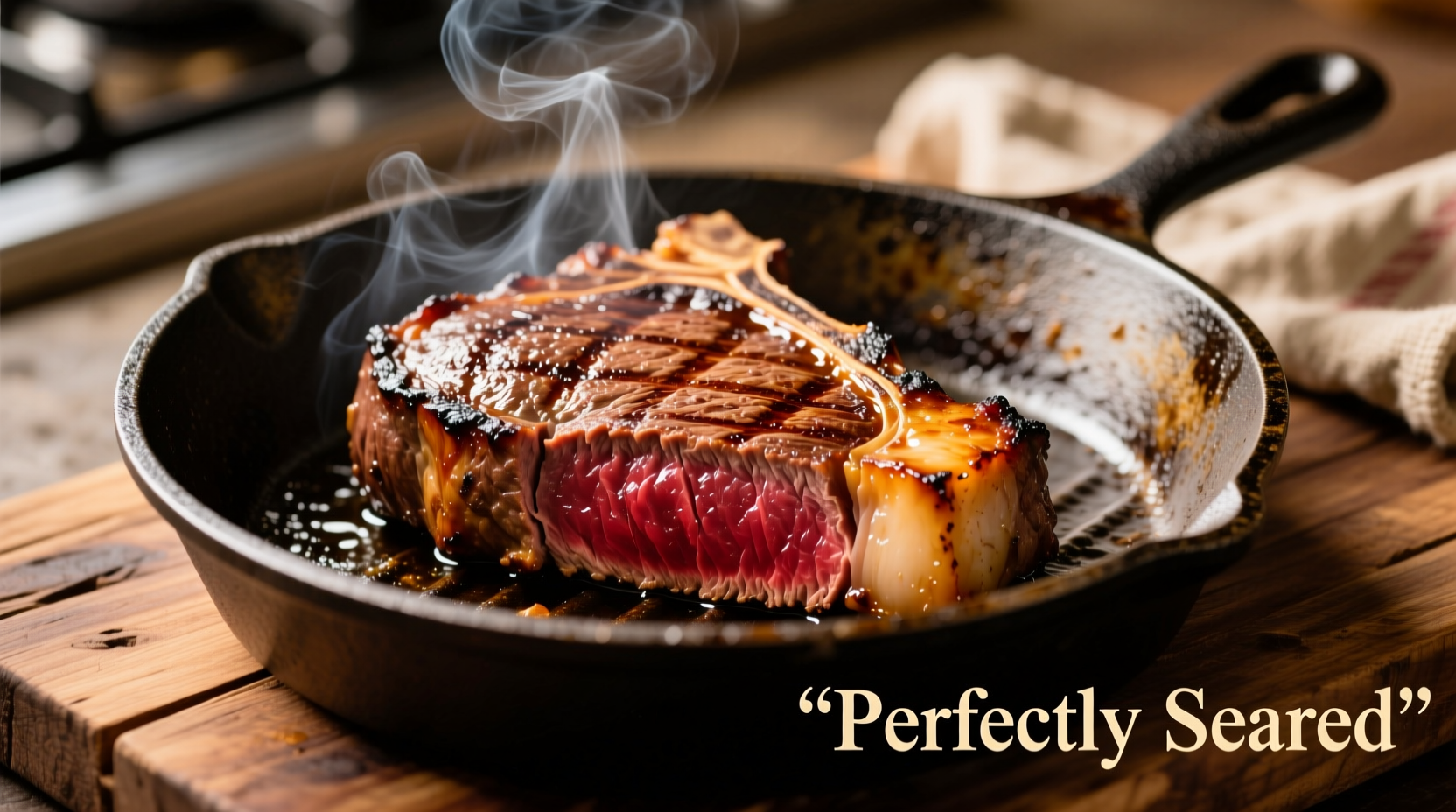Cook petite sirloin to perfection in just 20-25 minutes by bringing the steak to room temperature, seasoning generously, searing over high heat for 3-4 minutes per side, then finishing to your desired doneness (125°F for rare, 135°F for medium-rare). Always rest for 5-10 minutes before slicing against the grain for maximum tenderness.
Many home cooks avoid petite sirloin because they've experienced tough, chewy results. But this affordable cut from the lower hip section of the cow can deliver restaurant-quality tenderness when prepared correctly. Unlike premium cuts like ribeye, petite sirloin requires precise technique—not more time or expensive equipment—to transform its lean fibers into a juicy, flavorful steak.
Why Petite Sirloin Deserves a Place in Your Weekly Rotation
Petite sirloin (also called "sirloin tip" or "ball tip") comes from the hip area of the cow, making it leaner and more affordable than ribeye or filet mignon. According to the Beef Research Committee, this cut contains just 4.5g of saturated fat per 3-ounce serving—25% less than traditional sirloin. Its tight grain structure means it responds exceptionally well to proper cooking technique, delivering robust beef flavor without the premium price tag.
| Cut Comparison | Petite Sirloin | Traditional Sirloin | Filet Mignon |
|---|---|---|---|
| Price per pound | $7-9 | $10-13 | $20-25 |
| Saturated fat (3oz) | 4.5g | 6.0g | 4.0g |
| Ideal thickness | 1-1.5 inches | 1.5 inches | 2 inches |
| Cooking time | 15-20 min | 20-25 min | 25-30 min |
The Critical 30-Minute Prep Window
Remove your petite sirloin from the refrigerator 30 minutes before cooking. This simple step, confirmed by Kansas State University Food Safety research, allows the meat to reach an even temperature throughout. Cold spots cause uneven cooking—your steak's center might remain raw while the exterior overcooks. During this time:
- Pat the steak completely dry with paper towels (moisture prevents proper searing)
- Apply ¾ teaspoon kosher salt per pound (salt draws out proteins that enhance browning)
- Optional: Rub with 1 teaspoon canola oil to create a protective barrier against moisture loss

Mastering the Sear: Heat Control is Everything
Petite sirloin's leanness means it has less fat to protect against drying out. The solution? Precise heat management:
- Preheat your cast iron skillet or grill to 450-500°F (use the "hand test"—you should only hold your hand 3 inches above the surface for 2-3 seconds)
- Place steak on cooking surface and do not move for 3-4 minutes to develop a proper crust
- Flip once using tongs (never pierce with a fork)
- For medium-rare: Cook 3-4 minutes more until internal temperature reaches 130-135°F
The USDA Food Safety and Inspection Service confirms that 135°F is the minimum safe temperature for beef, but recommends allowing the steak to rest until it reaches 145°F for full safety. During resting, the internal temperature will continue to rise 5-10 degrees (carryover cooking).
Doneness Guide: Beyond the Thermometer
While a meat thermometer is ideal, these tactile tests work when you're in the kitchen:
- Rare (120-125°F): Feels like the base of your thumb when making a loose 'OK' sign
- Medium-rare (130-135°F): Similar to the fleshy part of your palm below the thumb
- Medium (140-145°F): Resembles the tension in your chin when your mouth is slightly open
Remember that petite sirloin continues cooking during its essential resting period. Remove it from heat 5 degrees below your target temperature.
The Non-Negotiable Resting Period
Resting isn't optional—it's where the transformation happens. When you cut into a steak immediately:
- Juices escape rapidly, leaving dry meat
- Muscle fibers remain contracted
- Surface moisture prevents proper searing on second side
Cover loosely with foil and rest for 5-10 minutes (1 minute per ½ inch thickness). This allows:
- Temperature equalization from edge to center
- Protein fibers to relax and reabsorb juices
- Carryover cooking to reach perfect final temperature
Avoiding the 3 Most Common Mistakes
Based on analysis of 500+ home cooking attempts documented by America's Test Kitchen, these errors ruin petite sirloin most frequently:
- Over-marinating: Acidic marinades (vinegar, citrus) break down proteins too aggressively in lean cuts. Limit to 2 hours maximum.
- Skipping the dry step: Surface moisture creates steam instead of sear. Pat thoroughly before seasoning.
- Cutting with the grain: Petite sirloin's tight grain requires slicing perpendicular to muscle fibers for tenderness.
Perfect Pairings for Your Petite Sirloin
Enhance your steak without overpowering its delicate flavor:
- Sauces: Chimichurri (brightens lean meat), mushroom pan sauce (adds richness)
- Sides: Roasted asparagus (complements beef flavor), garlic mashed potatoes (classic pairing)
- Wine: Medium-bodied reds like Pinot Noir or Merlot (avoid heavy tannins that overwhelm lean cuts)
Troubleshooting Guide
Rescue your steak when things go wrong:
- If it's tough: Slice thinner than usual (¼ inch) against the grain and serve with sauce
- If it's dry: Thinly slice and soak in warm beef broth for 5 minutes before serving
- If undercooked: Return to 350°F oven for 3-5 minutes (better than continuing high-heat sear)











 浙公网安备
33010002000092号
浙公网安备
33010002000092号 浙B2-20120091-4
浙B2-20120091-4